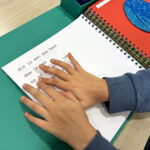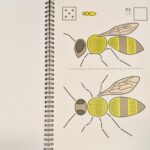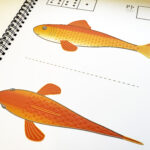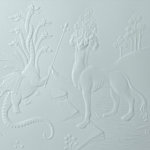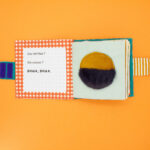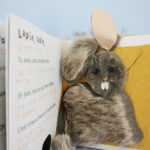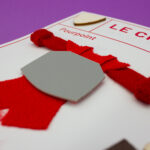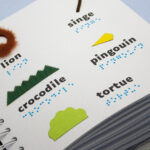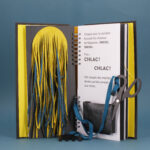Designing a tactile book
This chapter offers guidance for parents, professionals and printing houses on designing different kinds of tactile books for children with visual disabilities, including examples of tactile books tailored to different developmental age groups. It covers general considerations to address before creating a tactile book, along with specific design and production recommendations.
Tactile books come in a wide variety of content, purposes, and authorship. Some are professionally designed and manufactured, while others are handcrafted by parents or carers. Before creating a tactile book it is important to specify who the book is for and to clearly define the objectives.
What makes a tactile book accessible?
- The structure and layout should be clear and predictable for early learners and contain the following elements:
Large-print (adapted to the child’s needs), - Braille text (using different methods),
- Varied tactile illustrations,
- Colour contrast to stimulate residual vision,
- Ergonomic layout,
- A binding that allows the book to be opened flat,
- Book size adapted to the child’s hands,
- Braille and/or a tactile element on the cover so that children recognize it,
- And finally, remember to test the prototype with visually impaired children!
What kind of book do I want?
Who is the book for? What is its purpose? Specify the purpose of the book and the didactic criteria for the age group and/or cognitive ability so that this can be imbedded in the design.
For younger children: collage books with varied textures.
To enjoy the simple act of reading a story together, as a family or with friends or classmates. Tactile books for younger children help to develop early braille literacy and image literacy. Using real objects in relation to the illustrations helps active engagement with the story, so that visually impaired children can draw upon their own experiences.
For older children: more complex tactile books with raised lines and textures.
These books help them understand complex subjects and concepts.
Do I need to create or adapt an existing story?
There are many different types of books and just as many possibilities to adapt them. An adaptation is not a copy of the original, it is a tactile translation of the essence of the original illustration. Note that each country has different laws regarding adaptations of books. It’s important to have permission from the author/publisher to avoid copyright issues.
Example: The original illustration shows a family of four walking down a grassy hill, the text does not state that this is a family or that there are four of them. In the adaptation, the hand becomes the character(s) and the grass is represented as the key element. The child uses a small plastic element to move through the grass.
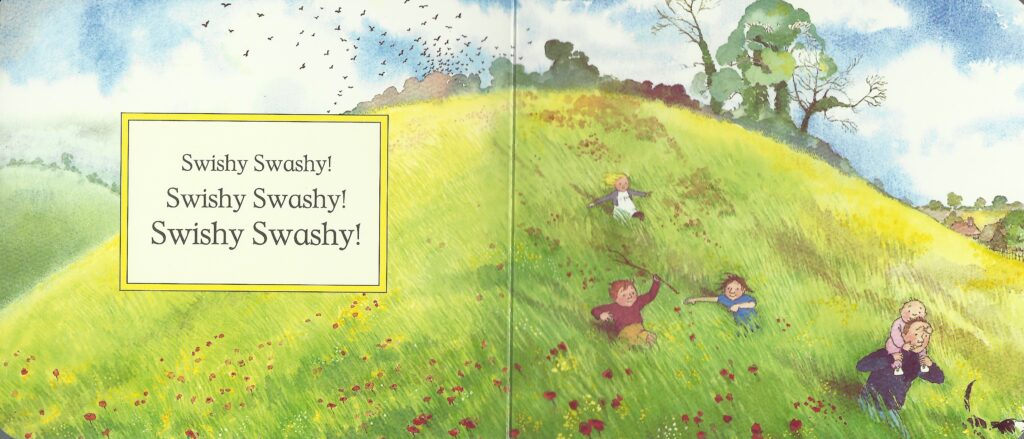
Second example: This story about a dog was written by the teachers using the first braille words that the children had learned. On the left, the story and on the right a supporting illustration and one sentence in braille. The strips have been designed to encourage the correct braille reading technique, using all their fingers in a row. The book comes with a hand puppet so that the children can interact with the story.
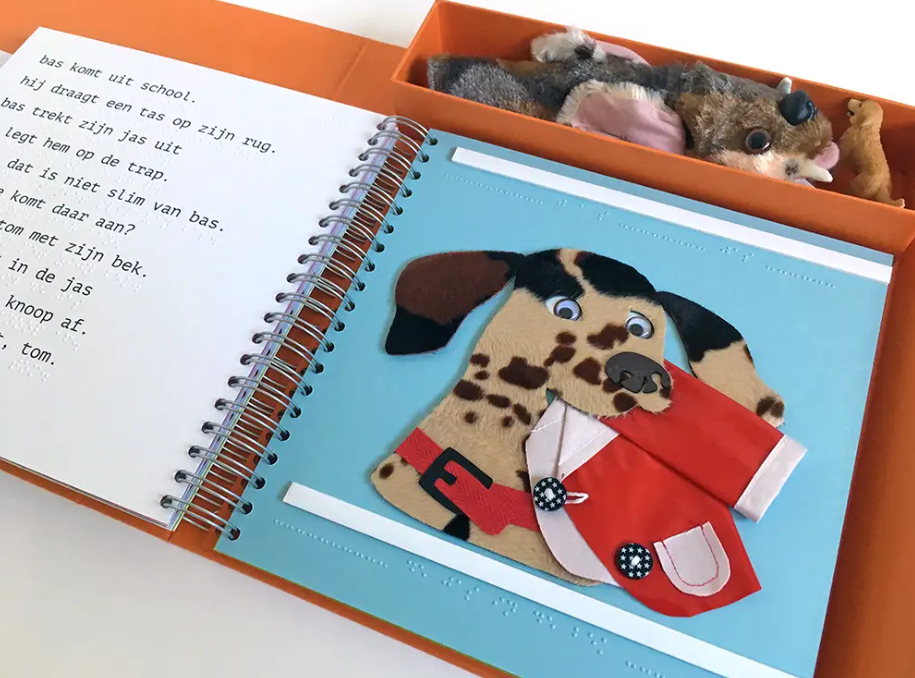
Tactile experiences through simple illustrations
There are many ways to represent an object or a character (figurative, associative, haptic).
- Figurative: providing carefully chosen and adapted visual representations, associated with relevant manipulations
- Associative: shapes which are freed from visual conventions to favour relevant tactile information
- Haptic: illustrating the experience of the body in movement.
- For more complex illustrations 3D objects work well; these help a child make the transition from 3D to 2D.

